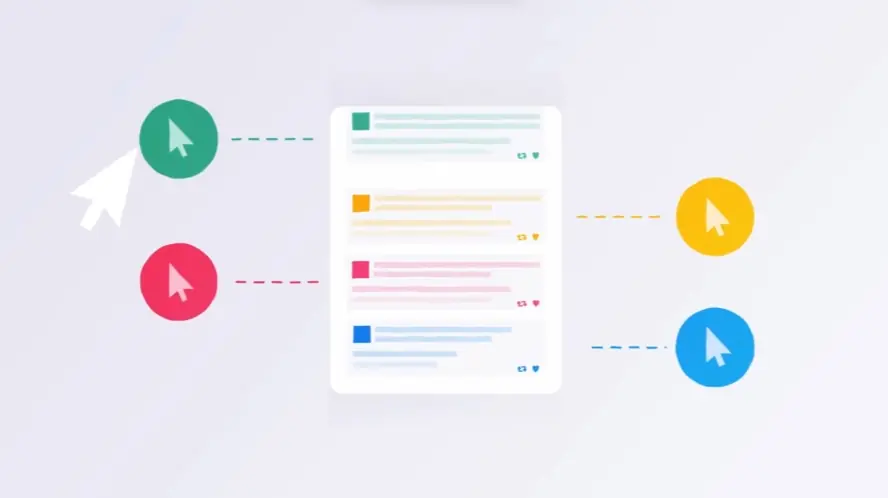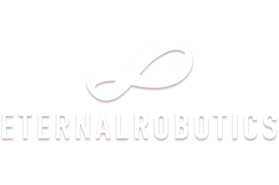Visualizing complex processes using 3D animation
Building upon the understanding that visualizing complex information significantly eases comprehension, crafting an impactful 3D Animated Training Video demands strategic thinking about how viewers absorb intricate processes. Creators move beyond simple depiction, focusing intently on the learner's perspective to build intuitive understanding. Structuring intricate processes into readily apparent, sequential information steps proves paramount for clarity, ensuring operational nuances are grasped with precision.
Grounding visual explanations using authentic real-world scenarios adds crucial context, demonstrating functions within familiar user workflows to significantly increase relevance and viewer connection. Strategically introducing interactive elements and visually highlighting critical safety or operational junctures within the animation proves vital for boosting engagement and ensuring retention of crucial information. Weaving in subtle social proof, perhaps showing recognizable logos, quickly establishes trust and credibility with viewers encountering the visualization for the first time.
Developing clear, action-oriented calls to action tightly aligned with video goals proves far more impactful for guiding viewer progression than generic prompts. For detailing intricate operational procedures or showcasing product mechanics, a precise 3D animated demonstration video proves invaluable, specifically designed to walk viewers through steps or features clearly.
- Measure success by calculating return on investment, tracking production expense against tangible gains such as reduced support queries or improved lead quality.
- Utilize viewer behavior analytics, including heatmaps, to pinpoint challenging sections where attention wavers, revealing areas needing refinement for optimal clarity and viewer retention.
- Conduct A/B testing on video components like introductions or calls to action, enabling data-driven refinement to identify approaches resonating most with the target audience and driving desired actions.
- Customize presentations for different viewing platforms, recognizing distinct viewer intent and environmental factors on social feeds versus dedicated product pages, ensuring maximum impact across channels and maximizing engagement opportunities.
Applying these strategic considerations transforms visualization into a highly powerful tool for learning, engagement, and achieving measurable business outcomes that extend beyond simple knowledge transfer.
How 3D animation reinforces learning visually
Visual learning reinforcement through 3D animation moves beyond mere efficiency; it actively shapes understanding and application. They transform complex, abstract ideas into tangible, easily digestible visuals, making intricate processes clear where text or static images might fail. By presenting scenarios and demonstrating features within realistic contexts, they allow learners to see exactly how concepts or tools apply in their actual work environment, boosting comprehension and retention. This contextual approach shows how systems integrate into existing workflows or solve specific, industry-relevant challenges, significantly increasing perceived value.
Understanding the impact requires looking past initial production costs. Measuring success involves tracking value generated, such as increases in qualified leads, shorter sales cycles driven by better-informed prospects, or fewer support tickets because users truly grasp product features. Just as important is analyzing how viewers interact. Tools that track attention and heatmaps reveal which parts resonate most, showing exactly where interest peaks or drops off, pinpointing confusing segments that need refinement. Incorporating social proof, like recognizable client logos or user statistics, swiftly builds trust and credibility.
To maximize effectiveness, tailoring content is essential. Videos intended for quick consumption on social feeds must grab attention instantly and potentially function without sound, employing text overlays for clarity. A 3D animated explainer video simplifying an internal process or a 3D animated how-to video demonstrating product use on a dedicated page can assume higher viewer intent, allowing for more detailed explanations and a slightly longer format. Iterative improvement is key.
- Calls to action are crucial; move beyond generic prompts to specific, action-oriented requests like "Start Your Free Trial" or "Request a Demo," guiding the viewer toward the next step relevant to their journey.
- Analyzing viewer behavior through integrated tracking tools provides granular data, highlighting areas that viewers rewatch for clarity or skip, offering direct insights for content optimization.
- A/B testing different elements, including thumbnails, introductory hooks, the wording or placement of calls to action, or even subtle script variations, yields valuable data on what truly resonates with the target audience and drives desired outcomes.
- Optimizing content involves not just platform mechanics but also considering viewer intent and the viewing environment to deliver the most impactful message where and when it is seen.
This strategic approach ensures 3D animation serves as a powerful catalyst for deeper learning and measurable results.
Designing instructional flow for 3D animation
Building upon visual clarity, strategic design elevates animated training content significantly. Crafting an instructional flow ensures viewers know their next step clearly. Moving past generic instructions, specific calls to action like initiating a trial or requesting details drive measurable engagement effectively. Connecting these endpoints to the video purpose and audience journey is crucial for maximizing impact. Quantifying the value generated involves tracking production investment against tangible gains, such as increased leads or reduced support inquiries, establishing true return on investment.
Presenting concepts within real-world scenarios makes abstract information relatable and increases perceived value. Showing how solutions integrate or tackle industry-specific problems resonates deeply with viewers. For instance, a 3D animated installation video gains credibility by depicting a realistic user environment and process. Likewise, a comprehensive 3D animated instructional video explaining complex software features thrives when demonstrating use in typical daily workflows. Incorporating social proof quickly builds viewer trust and credibility.
Optimizing for diverse platforms acknowledges varied viewing contexts and intent. Social media demands instant attention, often without sound, favoring brevity and text overlays to convey core messages rapidly. Dedicated product pages allow for more detailed explorations, assuming higher viewer intent. Analyzing viewer behavior through analytics provides indispensable data on audience interaction patterns frame by frame.
- Track production costs against key metrics like lead generation or support cost reduction to accurately gauge true return on investment.
- Utilize heatmaps and attention data to identify specific points where audience interest may drop or content requires additional clarification for better retention.
- Implement systematic A/B testing on various video elements, from initial thumbnails to script variations, to understand what resonates most and drives desired actions.
- Tailor content length, style, and audio dependency based on whether viewers are passively scrolling social feeds or actively seeking information on dedicated learning portals.
Designing for impact means continuously refining the instructional flow based on observed audience interaction patterns and measured business results.
Importance of 3D model accuracy for training
Accurate 3D models form the bedrock of effective training, enabling precise demonstrations that resonate deeply with learners. Their importance extends far beyond simple visualization; precision allows creating authentic real-world scenarios, showing exactly how equipment integrates into existing workflows. This detail increases perceived value significantly, particularly when showcasing solutions specific to a user's industry or daily tasks.
Precision also enables meaningful performance analysis. Measuring the actual return on investment from a video requires tracking production costs against value generated. Accurate models contribute to tangible outcomes like increased qualified leads or reduced support volume, clearly demonstrating their efficacy. Tools analyzing viewer behavior become truly insightful when the underlying visuals are accurate; they show precisely how viewers interact with the visual information presented.
Strategic elements built upon accurate models amplify impact. Clear, action-oriented calls to action are vital post-training, guiding technicians or customers toward next steps. Specific prompts like "Request a Demo" align directly with business objectives. Furthermore, incorporating social proof, such as showcasing well-known company logos that utilize the equipment, builds immediate credibility and trust based on the accuracy of the presented information.
- Showing how a 3D animated mechanism video accurately depicts complex internal functions allows detailed analysis of viewer attention via heatmaps, revealing confusing points.
- Demonstrating features within accurate, relevant contexts makes a product tour more relatable and believable for the target audience.
- Tracking value generated, like reduced support ticket volume resulting from users understanding features from an accurate 3D animated process video, directly measures training effectiveness.
- A/B testing different visual approaches or CTA wording provides granular data on audience response, refining the training asset for better conversions.
By ensuring 3D model accuracy, training assets deliver reliable information, enable valuable performance measurement, and provide a strong foundation for persuasive calls to action and trust-building elements, ultimately driving superior learning outcomes and business results.
Explaining abstract concepts with 3D animation
Bringing abstract concepts to life for training presents a unique challenge, one where 3D animation excels. They allow learners to step inside complex systems, visualize intricate processes, or understand intangible ideas in a way static visuals cannot match. This capability is invaluable whether creating a 3D animated tutorial video explaining sophisticated software architecture or a 3D onboarding video introducing company-wide workflows and values. By transforming the abstract into the tangible, animation significantly boosts comprehension and retention.
Maximizing the impact of these visual tools involves strategies extending beyond creation. Implementing clear and specific calls to action is vital. Instead of vague prompts, using action-oriented text like "Start Module" or "Explore Further" directly guides the learner's next steps, linking the visual understanding to practical engagement. Measuring the success, or ROI, means looking at the value generated – perhaps a reduction in support queries because the animation clarified a complex feature, or faster task completion times after a process visualization.
To ensure these animations resonate, incorporating real-world scenarios and demonstrating concepts within relevant contexts proves highly effective. This shows viewers how the abstract principles apply directly to their daily tasks or industry challenges. Analyzing viewer behavior, perhaps through tracking which sections are rewatched, offers clues about where concepts might still be difficult to grasp, allowing for targeted refinement. Furthermore, A/B testing different visual approaches or calls to action can provide data-driven insights into what resonates most with the target audience, optimizing the animation's effectiveness in clarifying those challenging abstract ideas.
- Visualize the invisible allowing learners to see internal mechanisms or complex data flows.
- Break down complexity into manageable, sequential steps through dynamic visuals.
- Foster engagement by making dry or theoretical subjects visually stimulating and relatable.
- Provide a consistent and repeatable explanation for concepts that trainers might describe differently.
Ultimately, leveraging 3D animation to explain abstract concepts empowers learners with deeper understanding and equips organizations with a powerful tool for measurable training success.
Representing 3D animated workflows effectively
Measuring the impact of animated workflows goes beyond creation; it is about strategic deployment and continuous refinement. Professionals understand these powerful visual tools require careful consideration of viewer engagement and measurable outcomes to justify their investment. They aim to ensure every animation effectively communicates its intended message and drives desired actions.
Implementing clear and specific calls to action proves vital as animations conclude. Rather than vague prompts, action-oriented text directly guides viewers. This approach aligns with the video's objective and the viewer's stage, prompting actions like starting a trial or requesting more information.
Quantifying return on investment is essential. This involves tracking production costs against the value generated. Value manifests through increased leads, reduced sales cycles from informed prospects, or decreased support tickets because users understood features better. Analyzing viewer behavior with tools like heatmaps reveals exactly which parts resonate or confuse, providing invaluable data for identifying areas needing improvement within a 3D product training video.
Incorporating social proof quickly builds credibility and trust. Brief mentions of well-known client logos or user statistics lend authority. Conducting A/B testing on elements like thumbnails, introductions, or CTA wording offers insights into what resonates most. Tailoring content and length for different platforms acknowledges viewer intent and environment; social feeds demand instant attention, possibly without sound, while a 3D safety training video on a dedicated learning platform can offer more detail.
• Analyzing viewer data helps refine content.
• Demonstrating features within relevant, real-world contexts makes them relatable.
• Integrating animations into existing user workflows increases perceived value.
• Optimizing for platform ensures reach and viewer engagement.
By focusing on these strategic elements, creators maximize the effectiveness and measurable success of representing workflows through animation.
Aligning 3D visuals with training goals
Achieving training goals using 3D visuals demands careful alignment from the outset. Beyond showcasing intricate details, effectively using a 3D training video means precisely tailoring the visual narrative to specific learning outcomes. This involves integrating relatable, real-world scenarios. Demonstrating how a product or process fits into existing workflows enhances perceived value significantly. For instance, a 3D technical training video explaining complex machinery benefits greatly from showing the equipment operating within its typical environment.
Guiding learners or customers toward next steps is crucial. Calls to action must be clear and specific, employing action-oriented text relevant to the viewer's journey. Defining how success looks is equally vital, moving past simple views to tangible metrics.
Measuring the return on investment involves comparing production costs against generated value. This value appears in various forms, such as increased qualified leads driven by better understanding, reduced sales cycle length due to informed prospects, or a decrease in support requests as users grasp functionality from the visual guide.
- Analyzing viewer behavior offers deep insights, with tools providing heatmaps and attention tracking to reveal engaging or confusing sections.
- Incorporating social proof, like brief flashes of well-known client logos or user statistics, rapidly builds credibility and trust with the audience.
- Employing A/B testing on elements such as thumbnail images, introductory seconds, or CTA wording helps identify what resonates most and drives desired actions.
- Optimizing the video for different platforms considers viewer intent and environment, adjusting factors like video length or the need for sound for social feeds versus detailed product pages.
By strategically aligning these elements, creators ensure their 3D visual investment delivers measurable educational and business impact.
Addressing specific technical animation requirements
Moving beyond fundamental engagement, mastering the technical nuances elevates 3D animated training videos into powerful tools driving tangible results. Addressing specific production and implementation considerations ensures these visual assets deliver maximum impact for learners and organizations alike. It requires a focused approach to planning and execution.
Ensuring effectiveness means paying close attention to how viewers are guided and how success is measured. Clear action prompts are essential; generic suggestions fall flat. Instead, use precise, action-oriented text aligning directly with the video goal and where viewers are in their learning journey. Measuring return on investment involves tracking production costs against generated value, such as a decrease in support inquiries or faster onboarding times. Analyzing learner interaction provides valuable insights. Using tools revealing viewer behavior helps pinpoint moments of confusion or peak engagement. Incorporating credibility builders like showing relevant client logos can build trust quickly.
Presenting information within realistic contexts significantly increases relatability. Showing how systems integrate into daily tasks makes the training immediately applicable. Effectively demonstrating complex internal structures, perhaps through a precise 3D assembly video, helps learners grasp intricate details. Creating a compelling 3D demonstration video allows showcasing product features within realistic scenarios. Optimizing content delivery across platforms, from quick social snippets to detailed product page explanations, addresses varying viewer intent and environments. Employing strategies like A/B testing different video elements refines content based on actual learner response.
- Strategically align clear calls to action with learning objectives to prompt specific next steps.
- Track key metrics like completion rates and assessment scores to measure knowledge transfer and video effectiveness.
- Utilize viewer analytics to identify sections requiring clarity improvements or further emphasis.
- Adapt video length and style for optimal viewing on platforms ranging from mobile devices to desktop computers.
By addressing these specific technical and strategic requirements, creators build training content that is not only visually compelling but also highly effective and measurably successful in achieving learning outcomes.
Crafting effective 3D training assets
Building on the recognized power of highly visual 3D animated simulations, crafting truly effective training assets demands strategic design and continuous refinement. These visual tools serve diverse needs, from a complex technical guide suitable for a 3D engineering video detailing processes, to illustrating the nuances required for a sophisticated 3D equipment video explaining operation and maintenance.
Maximizing impact means moving beyond simple visuals. It requires concluding each training module with clear, action-oriented calls, guiding viewers directly to the next step, whether executing a simulated task or reviewing documentation. Presenting assets within authentic, job-relevant environments significantly increases trainee relatability, demonstrating how the subject integrates into existing workflows and solves specific problems they encounter daily. Incorporating subtle indicators of real-world application or usage can also build credibility quickly.
Understanding trainee interaction provides invaluable insights. Utilizing viewer analytics, like attention tracking, reveals exactly where content resonates or where comprehension drops. This data becomes the foundation for refinement.
- Analyzing data helps pinpoint confusing segments needing clarification.
- Continuously optimize by employing A/B testing on different elements like opening scenes or narrative approaches.
- Adapting content style and length for diverse platforms is essential for reaching trainees where they learn.
- Tailoring the level of detail based on the viewing environment and audience intent ensures the message lands effectively.
Measuring success involves tracking production costs against tangible outcomes like reduced errors, faster task completion, or improved procedural compliance, providing a clear picture of return on investment. Strategic creation leads to measurable success.
Pacing learning segments in animation
Pacing animation learning segments involves more than speed control. It means structuring information delivery so viewers grasp core concepts, absorb details, and understand next actions. Effective pacing guides the learner through the material, ensuring complex ideas resonate and stick. This strategic flow helps achieve desired learning outcomes efficiently by controlling how and when information is presented to the viewer.
Clear specific calls to action finishing a training video prove vital. They translate viewer understanding into tangible steps. Instead of generic prompts, creators use action oriented text tailored to the video objective and viewer journey stage. Measuring video impact involves tracking production costs versus value generated. This value might be increased qualified leads or decreased support volume from users understanding features from the video. Effective pacing is particularly crucial in a 3D healthcare video, ensuring complex procedures or anatomical details are absorbed without rush, directly contributing to value by reducing errors or improving compliance.
Analyzing viewer behavior provides valuable insights for refining pacing. Tools like heatmaps attention tracking reveal exactly which parts viewers watch, rewatch, or skip. This data pinpoints confusing segments or points where interest wanes. Understanding internal systems, perhaps shown in a 3D exploded view video, benefits from paced reveals allowing comprehension of each component before moving on. Incorporating social proof, such as brief flashes of well known company logos user statistics, builds credibility and trust quickly within the learning sequence.
Continuous improvement relies on testing adapting. A/B testing different video elements yields significant insights into viewer response. Optimizing video versions for different platforms also requires considering viewer intent environment. Videos social media feeds need instant attention, often without sound using text overlays shorter length. Video embedded product page assumes higher intent allows slightly more detailed explanations. (Continuous improvement)
- Test thumbnail images boost initial clicks
- Analyze impact of first 10 seconds on viewer retention
- Compare different CTA placements wording
- A/B test minor script variations visual styles
Combining strategic content flow, actionable next steps, data driven analysis, ongoing testing empowers creators develop 3D animated training segments that truly resonate, achieving higher engagement better learning outcomes.




































